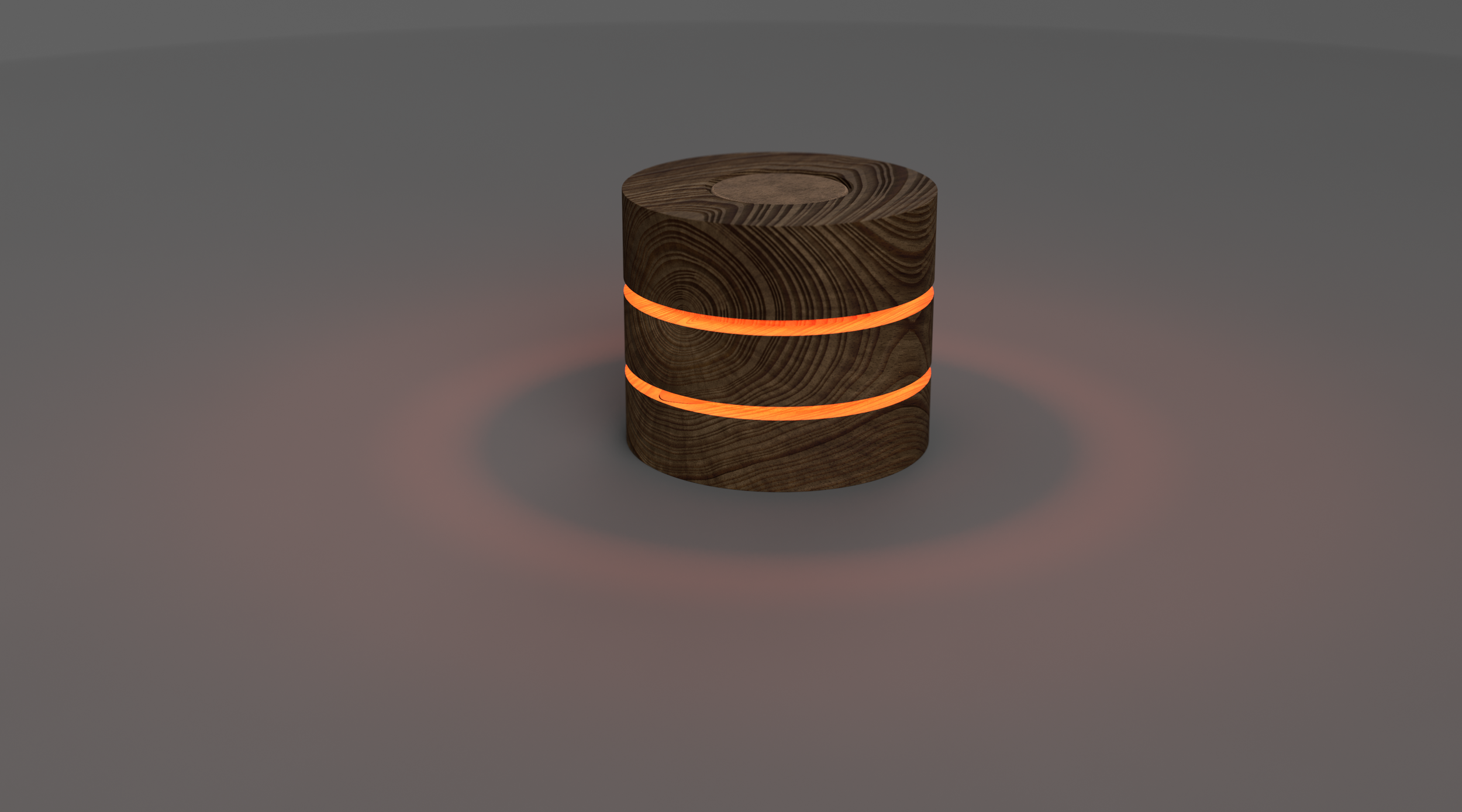Hard goods
Brown Glass Pendant
-

Antique Glass
Warm light through brown glass to create a beautiful ambience. Lighting can have a calming effect when it is dialled in just right.
-

Recycled Parts
Most people throw away items that have perfectly useable parts that are in great condition, such as switches, chrome rods and brass caps. I like to collect theses old pieces of hardware and use them in future products. This lamp is 100% recycled.
-

Shape
Shape can really make or break an aesthetic. Less is more in this case as it fits with the decor of the clients style.
The Chair Refurbishment
-

Green Velvet
Saving old furniture and giving them new life is very rewarding. For this piece, I was able to match the current decor of the velvet curtains.
Sentimental wireless charging lamp
I created a wireless charging lamp that held a sentimental narrative for the end user. Before wireless phone chargers looked anything more than a plastic disk, there was an assignment at university to create anything you’d like to. Due to my love of lighting and new tech, I decided to build a lamp that incorporated the newly used technology of wireless charging for mobile devices and make it look like it belongs with all the other rustic wooden furniture.
When starting out, I was intrigued by something that one of my lecturers explained about narrative and how you can give products a story. This narrative or story that you create for your products can be very meaningful to the end user, so much so that the user utilises and saves the product longer than they would if the product had no story or sentimental value. The idea came to me straight away and I decided to make the lamp for my mother with my grandmother’s worn-out, old side table. The narrative was strong but there was also another significant outcome, I was reusing material that was destined for the trash and producing a new narrative for my mother. Firstly, the timber used to be in my grandmother’s house for 30+ years and my mother grew up using it. Secondly, it was a new narrative for my mother, one that included a useful and aesthetically pleasing product that her son made for her.
Book holder prototype
For a university assignment, my two friends and I designed a simple book holder that could be used in the pre-existing desks that had limited size. The book holder’s main function was to hold a book open and upright so that the user could utilise their laptop at the same time. The desks were cramped and the main issue was limited space.
This was prototype nr. 2. The brief required the product to be made from recycled materials or materials found in the waste. We got lucky and found some off-cuts of plywood and 2x2s in the wood shop. These constraints directed the design and we therefore tried to keep it simple and basic with performance as it’s main function.
Laser cut 3D business cards
I wanted to create a business card for an exhibition at my university and I wanted to put my laser cutting knowledge to the test. I thought of a way to do so by layering three sheets of card and sandwiching the cards together. This method allowed me to create a strong 3D aspect. By cutting the cards with certain information in selected areas, I was able to create a depth and colour contrast, all without the use of ink.
Concrete clothe chair
The brief was to create a simple, sturdy and stackable stool for the Eats & Beats Night Markets in Brisbane. The idea was to use a material that was unconventional for its newly intended use. My mate Isaac and I came across concrete clothe, a thick canvas impregnated with a concrete powder. The clothe was primarily used for ditch lining, bund lining, gabions, remediation and slope protection. The concrete powder that was sandwiched between a canvas and a thin rubber mat. When the clothe was placed into its final position, it is hydrated and then hardens with a concrete like strength.
We didn’t realise how heavy this stuff can be, but it was fun to experiment with and it taught us a lot about structural support and how materials can be used to create their own structure if twisted and bent.
-

The form we designed to stack wasn’t feasible without extra support. Thankfully, we could wrap the clothe around to hide and bind the metal sub-frame.
We found two old metal chair frames thrown away in a big dumpster behind the university. The weight was supported perfectly.
-

We bought too much material and didn’t know what to do with the excess, so we decided to get a little creative and make some functional art. This was very strong and suprisingly comfortable.
The canvas texture was a delight to touch. This was an unexpected outcome.
-

The canvas clothe was ideal for the hot Australian summers. It was very ergonomic and comfortable to sit on.
We applied a white paint that helped protected it from the heat and gave it a nice clean finish. It looked like a pillow and invited people to sit on it.







